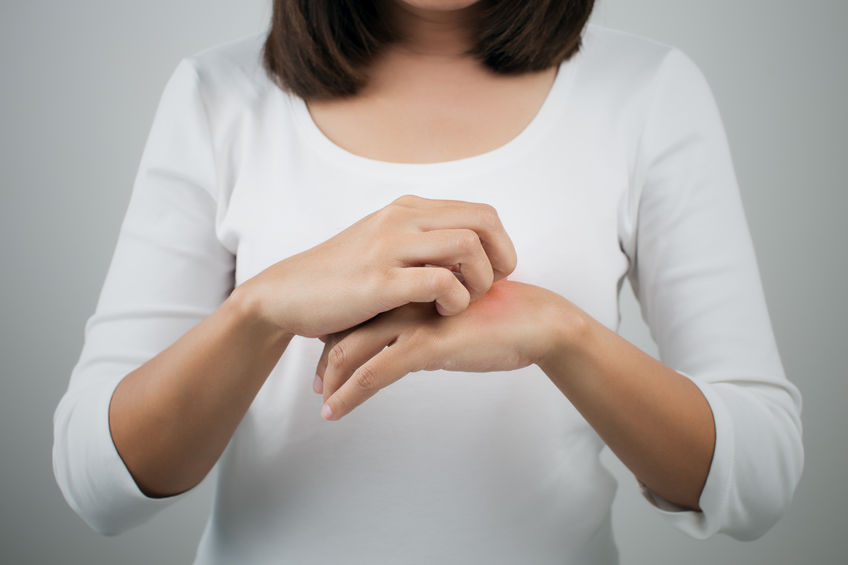Do you have a rash that simply won’t go away, even with the use of corticosteroids? With a large percentage of the population suffering from eczema and psoriasis, the usage of topical steroids is prevalent among those afflicted with the irritating conditions. Overuse of steroid creams can lead to a side effect: addiction and withdrawal symptoms. Known as topical steroid withdrawal (TSW) or topical steroid addiction (TSA), this condition can occur when you stop utilizing your topical corticosteroid. Though TSW is painful, people often delay treatment. As a result, redness and irritation worsen, leaving people to feel unnecessary discomfort. If you have extreme reactions after steroid treatment, it is important to see a dermatologist. At Advanced Dermatology, we understand how frustrating TSW can be are here to help provide solutions and relief. The unsightly appearance of eczema scales can lead to depression and a loss of self-esteem. Learn more about eczema and its management options.
What is Topical Steroid Withdrawal?
TSW can have a major impact on those affected. Individuals with TSW experience red, burning and itchy skin in isolation or large areas spread across the body. This triggers scratching, which leads to temporary relief but also damages the skin’s sensitive barrier. When a flare-up is experienced, the body responds by oozing, bleeding and even splitting open. In addition to skin issues, TSW can also cause stress, lethargy and strain in those affected.
When does Topical Steroid Withdrawal Occur?
Also referred to as red burning skin syndrome, the illness occurs when you stop utilizing your topical corticosteroid. The adverse reaction may present itself in the form of a rash or red burning skin for days, or weeks after discontinuing the medicine. Normally, before stopping treatment, patients report their skin to be clear with sections of resistant eczema patches. As corticosteroid withdrawal begins to present itself your skin starts to feel thicker, become swollen and papules may arise. Once the condition escalates skin may feel sensitive to the touch and you may experience a lack of sleep and incredibly itchy skin. Without proper treatment, TSW can lead to infection.
How to Prevent Topical Corticosteroid Withdrawal
Visiting a dermatologist at the onset of any changes in your skin is a great way to be ahead of topical corticosteroid withdrawal. In addition to knowing your body, prevention is key. If you are prescribed corticosteroids, consult with your doctor regarding less-frequent application and dosage sizes. High potency doses of topical corticosteroids may lead to TSW.
How to Treat Topical Corticosteroid Withdrawal
If it’s determined that you’re suffering from topical corticosteroid withdrawal, the dermatologist will prescribe a series of oral steroids to combat the symptoms. After consulting with your dermatologist you’ll have a better understanding of how to properly taper off the topical corticosteroid. Concerns about corticosteroids for the treatment of atopic dermatitis are frequently handled by our NYC practice.
Why choose Advanced Dermatology for your Topical Steroid Withdrawal?
If you have concerns regarding eczema, contact dermatitis, psoriasis or topical steroid withdrawal, our trusted team is here to help. We have several locations throughout the New York and New Jersey area and offer premium care. Please contact us today for a complimentary consultation.

